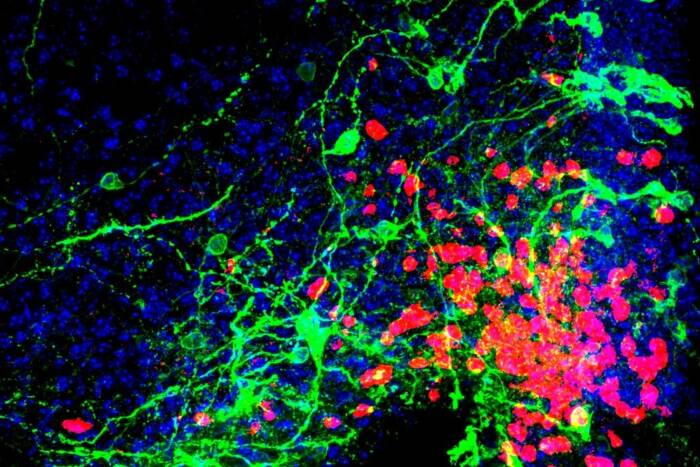Study links epigenetic processes to the development of the cerebellar circuitry
From before birth through childhood, connections form between neurons in the brain, ultimately making us who we are. So far, scientists have gained a relatively good understanding of how neural circuits become established, but they know less about the genetic control at play during this crucial developmental process.
Now, a team led by researchers at The Rockefeller University has described for the first time the so-called epigenetic mechanisms underlying the development of the cerebellum, the portion of the brain that allows us to learn and execute complex movements. The term epigenetics refers to changes to DNA that influence how and when genes are expressed.
“Until now, nobody knew what genes control the steps needed to make the circuitry that in turn controls the behavior the cerebellum is famous for,” says Mary E. Hatten, Frederick P. Rose Professor and head of the Laboratory of Developmental Neurobiology. “Our study shows that pivotal changes in the levels of all epigenetic pathway genes are needed to form the circuits.”
These epigenetic pathway genes modify chromatin, which is DNA packaged with protein. Alterations to chromatin are an important type of epigenetic change because they affect which genes are available for translation into proteins.
Further investigation revealed that one of these epigenetic regulators was specifically responsible for processes crucial to forming connections between these neurons and other parts of the brain and for the expression of ion channels that transmit signals across synapses, which are gaps between neurons.
Simple structure, complex functions
The cerebellum is a relatively simple brain structure, yet its function is anything but simple. This part of the brain controls our ability to move; learn new motor skills, such as those required to play an instrument; and perceive the body’s position, motion, and equilibrium.
Hatten’s research on the development of the mammalian brain, including the cerebellum, has focused on two crucial stages: the birth of neurons and the migration of immature neurons to form the layers that are a basic structural element of this part of the brain. After the young neurons are in place, they send out branches, called dendrites, to connect to fibers from other parts of the brain, and establish ion channels, which make it possible for them to become electrically active.
Until now, no one knew how the genes that control these two processes were activated.
New ways to study gene activation
Two developments in technology made the current study possible. The first, TRAP, was developed at Rockefeller. It enables researchers to map gene expression in specific types of neurons. Hatten’s team applied this method to identify the genes expressed in granule cells, one of the two cell types that make up the cerebellum, in the mouse brain from birth through adulthood. They focused on changes in gene expression 12 to 21 days after birth, since this is the main period during which the circuitry of the cerebellum is formed.
The second key method used in the study is metagene analysis, a mathematical model developed at the Broad Institute of MIT and Harvard that allows researchers to study large sets of genes and see changes in patterns that would be too difficult to interpret by looking at individual genes. Three investigators from Broad collaborated on the current study. “Using this analytical tool, we showed that during this crucial period of time in development, all the pathways that control the remodeling of chromatin changed,” Hatten says.
A link to experience
The investigators continued by looking at the actions of one such epigenetic pathway, involving TET enzymes, which are known to make specific changes to chromatin that can switch on gene expression.
By activating these enzymes in embryonic stem cells that had differentiated into immature granule cells, the researchers could increase the expression of axon guidance and ion channel genes, “just as happens during normal development,” Hatten says. These two types of genes are critical for generating synaptic connections.
The opposite occurred when the genes for the TET enzymes were shut down. “The cells went through early development, but they didn’t extend the dendrites needed to make the connections that they should have made,” she says.
“We have long known that—through epigenetic changes—early occurrences in childhood, including events that result in stress or pain, can have a crucial effect on the brain later in life,” Hatten says. “These findings can help us begin to understand how those experiences can influence the connections and circuitry in the cerebellum.”


